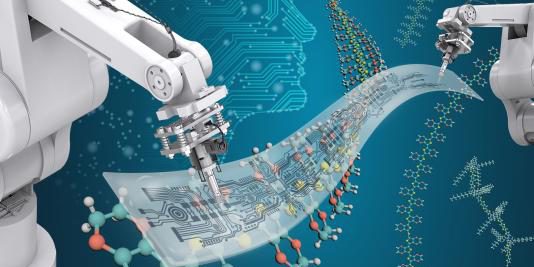Researchers have a new scientific tool called Polybot, combining the power of artificial intelligence with robotics. Potential applications include speeding up the discovery of wearable biomedical devices, materials for better batteries, and more.
Today’s wearable technologies like smart glasses and watches are just the start. The next generation of flexible electronics will be more efficient and sustainable, better able to monitor our health and treat certain diseases, and much more. They will be composed of electronic polymer materials — a soft pliable substance that can conduct electricity.


